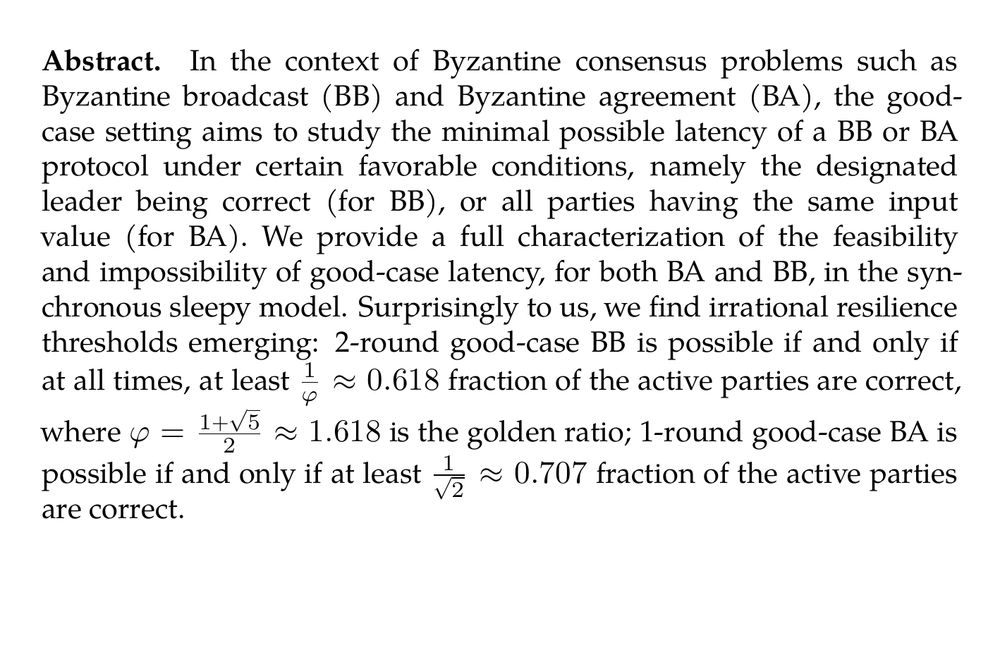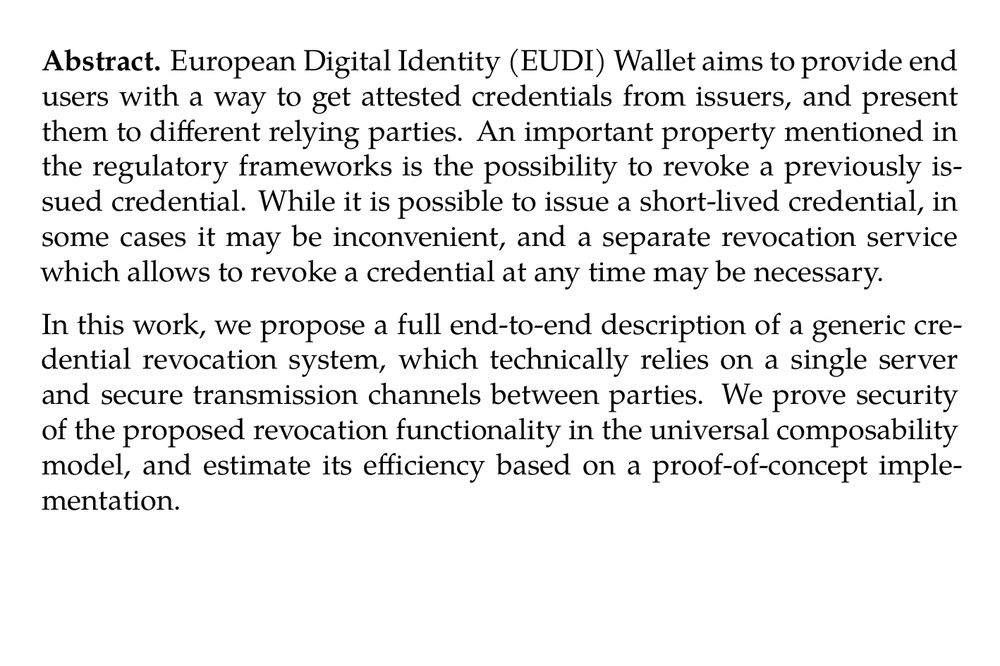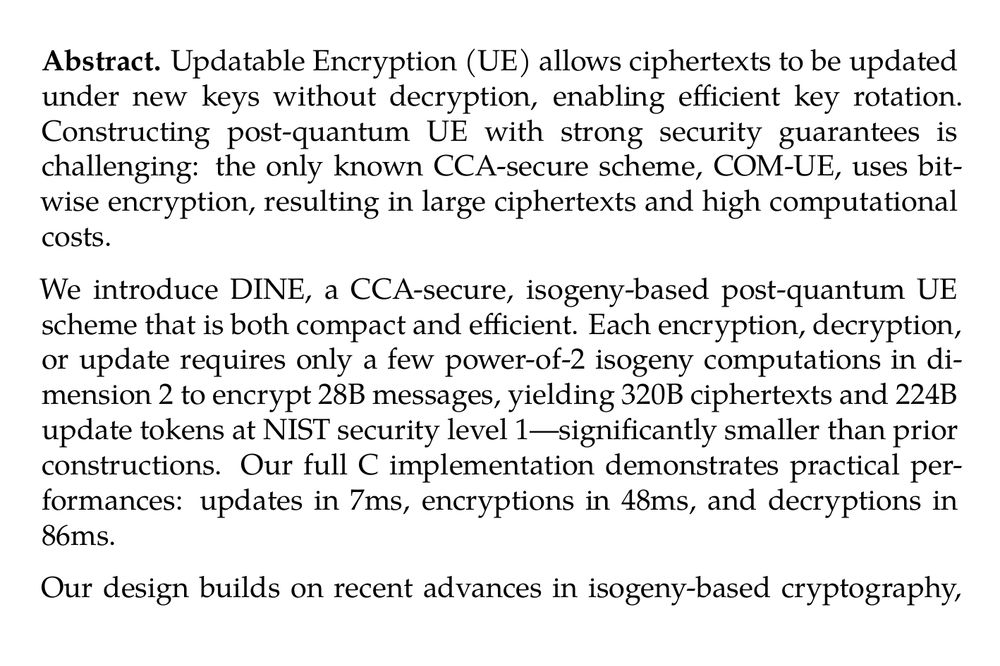ePrint Updates
@eprint.ing.bot
970 followers
1 following
5.3K posts
Unofficial bot tracking the IACR Cryptology ePrint Archive (eprint.iacr.org). Maintained by @str4d.xyz.
Currently only posts about new papers. Author names are linkified to Bluesky accounts (cryptography.social); contact maintainer for inclusion/removal.
Posts
Media
Videos
Starter Packs




![Abstract. Fully Homomorphic encryption (FHE) allows computation without decryption, but often suffers from a ciphertext expansion ratio and overhead. On the other hand, AES is a widely adopted symmetric block cipher known for its efficiency and compact ciphertext size. However, its symmetric nature prevents direct computation on encrypted data. Homomorphic transciphering bridges these two approaches by enabling computation on AES-encrypted data using FHE-encrypted AES keys, thereby combining the compactness of AES with the flexibility of FHE.
In this work, we present a high-throughput homomorphic AES transciphering based on the CKKS scheme. Our design takes advantage of the ring conversion technique to the conjugate-invariant ring [real_heaan] during the transciphering circuit, including bootstrapping, along with a suite of optimizations that reduce computational overhead. As a result, we achieved a throughput (per-block evaluation time) of 0.994ms—less than 1ms— outperforming the state-of-the-art [xboot] by 1.58× when processing 2¹⁵ AES-128 blocks under the same implementation environment, and support processing 2⁹ blocks within 3s on a single GPU.](https://cdn.bsky.app/img/feed_thumbnail/plain/did:plc:fwa55bujvdrwlwlwgqmmxmuf/bafkreiafi3hly3mu233awvc274bgx5efqibivpznmgjk4vunaok5hmt2xm@jpeg)






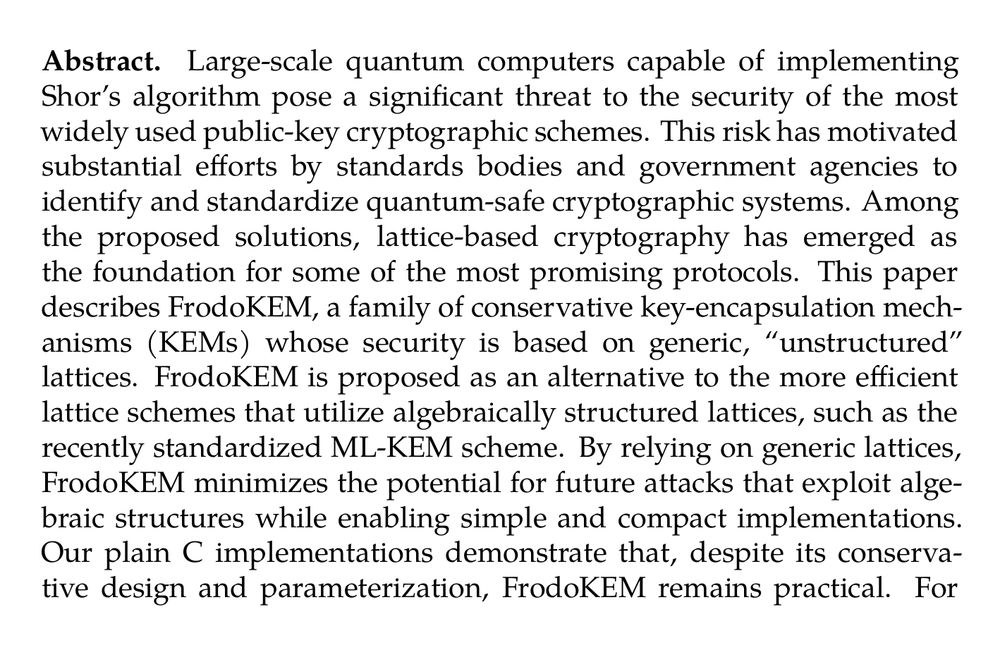
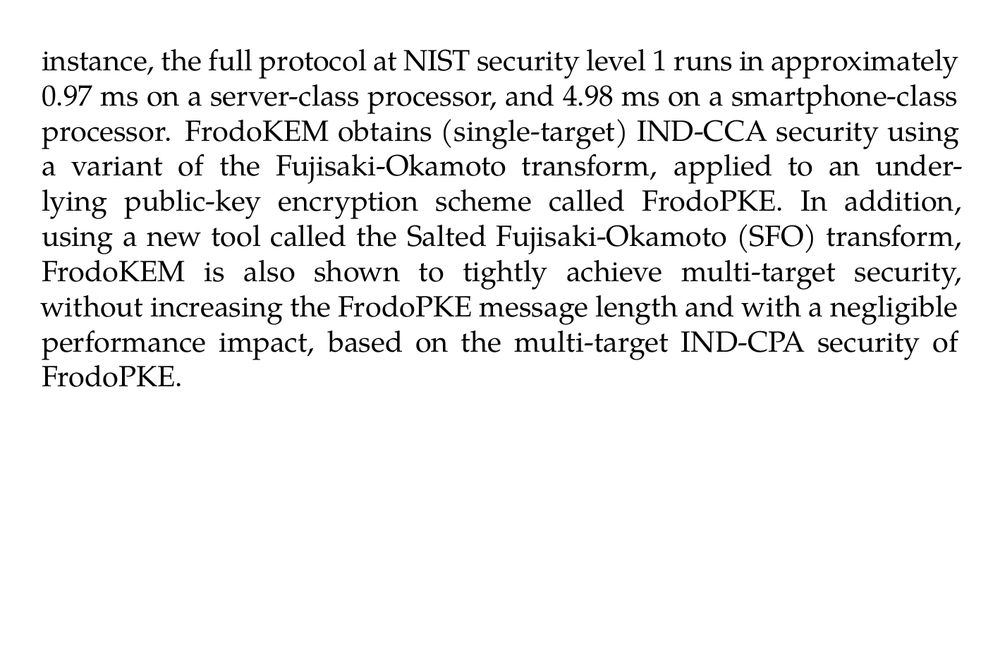





![Abstract. Chen, Liu, and Zhandry [CLZ22] introduced the problems S|LWE⟩ and C|LWE⟩ as quantum analogues of the Learning with Errors problem, designed to construct quantum algorithms for the Inhomogeneous Short Integer Solution (ISIS) problem. Several later works have used this framework for constructing new quantum algorithms in specific cases. However, the general relation between all these problems is still unknown. In this paper, we investigate the equivalence between S|LWE⟩ and ISIS. We present the first fully generic reduction from ISIS to S|LWE⟩, valid even in the presence of errors in the underlying algorithms. We then explore the reverse direction, introducing an inhomogeneous variant of C|LWE⟩, denoted IC|LWE⟩, and show that IC|LWE⟩ reduces to S|LWE⟩. Finally, we prove that, under certain recoverability conditions, an algorithm for ISIS can be transformed into one for S|LWE⟩. We instantiate this reverse reduction by tweaking a known algorithm for (I)SIS∞ in order to construct quantum algorithm for S|LWE⟩ when the alphabet size q is a small power of 2, recovering some results of Bai et al. [BJK+ 25]. Our results thus clarify the landscape of reductions between S|LWE⟩ and ISIS, and we show both their strong connection as well as the remaining barriers for showing full equivalence.](https://cdn.bsky.app/img/feed_thumbnail/plain/did:plc:fwa55bujvdrwlwlwgqmmxmuf/bafkreic6qmu4r2myctw2dwrnrc5zs2rwqqg2ereheumdg6m3pweespvnf4@jpeg)

